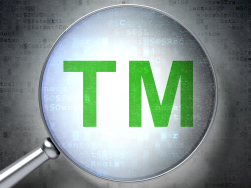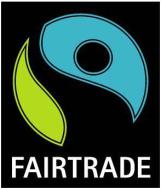

Licensing – a way to exploit your trademark
A trademark can be any sign capable of distinguishing the products of one company from those of another. If you own a trademark, you have exclusive rights to use that trademark on the products you have protected and are offering on the market. This means that you can prevent any third party from using the same or a similar mark for the same products. Consumers usually base their purchasing decision on the good reputation of or their previous experience with a brand. The trademark attached to the products is therefore of great value to a company as it helps the consumers to pick out products from a specific commercial origin.
Through a license agreement the owner of a trademark, the licensor, can allow third parties, the licensees, to use his trademark under certain conditions in return for payment.
1. Why enter into a license agreement?
Sometimes the owners of intellectual property rights do not have the skills, capital and commitment to commercially exploit their rights themselves. In these situations it is a good solution to find someone who has that capacity and gr
ant them a license. Others might have this capacity themselves, but wish to use licensing as a marketing and brand extension tool to expand and increase their brand value. Also, the licensee benefits from a license agreement as he can commercially exploit a trademark, in which he has not invested time and money in developing. Further advantages of license agreements will be highlighted at a later stage of this article.
2. The license agreement
When granting a license, the parties need to lay out in a contractual agreement the scope of how the licensee is allowed to exploit the granted right. The license agreement should be made in writing. However, it could be in oral if the law of the relevant country allows it.
a. Checklist for your license agreement:
What:
- Include clear definitions of which intellectual property rights are licensed, e.g. trademarks, design rights, patent rights etc.
- specify for which goods and services the licensee may exploit the trademark;
- the required quality of the goods and services and in which way the proprietor will monitor that such quality is delivered;
- how the royalty rates shall be calculated and under which criterions the royalty fee shall be paid;
Where:
- the territory, e.g. in which country, the licensee may use the trademark;
Extent:
- specify the degree of exclusivity that is granted, meaning whether it is an exclusive, sole or non-exclusive license;
- whether there are any restrictions on the right of the licensee to exploit the trademark;
- whether the licensee may grant sub-licenses or transfer its rights to others;
- whether the licensee has the right to take legal actions in respect of infringements of the trademark;
Duration:
- specify whether the agreement is for a fixed period of time, for indefinite duration or terminable by either party;
- under what circumstances a party might terminate the contract;
This list is not exhaustive. The parties may include individual clauses that they consider necessary.
b. Different types of licenses
The parties need to lay out in the agreement the degree of exclusivity that will be granted.
Exclusive license: The licensor is granted a right to use the trademark and exclude all others. The proprietor is thus not able to grant a license for the same trademark to any other parties and he can also not exploit the mark in trade himself. When granting an exclusive license, a minimum performance obligation is usually included in the agreement.
Sole license: The licensor is prevented from granting a license of the same mark to a third person, but, he is allowed to use the mark himself
Non-exclusive license: The agreement does not restrict the licensor from licensing the trademark to other third parties or from using the mark himself.
3. Recording of the license agreement
Before entering into a license agreement where your trademark will be used in a foreign jurisdiction, it is crucial to seek legal counsel in order to make sure that possible legal requirements applicable to trademark licensing agreements in that jurisdiction are met. A professional must, for example, examine whether the license agreement itself needs to be recorded in the national trademark registry. Many countries have such requirements and the failure to comply may result in the trademarks or the license agreements itself becoming either invalid or unenforceable. The failure to comply may also result in penalties for the contracting parties.
There are no legal formalities required under international law for the licensing of trademarks. Most license agreements are treated as regular contracts which are governed by the law of the country of the transaction, or any other law agreed upon by the parties.
Although international laws do not require a license to be recorded with the relevant trademark registry, some national countries require that there is an official and publicly accessible record of the permitted use. Under some laws the requirement is dependent on whether one of the parties requests such recordal. Under other national laws, such recording is not required in order for the agreement to be valid, but a failure to record a license may render the rights of the licensee ineffective against third parties.
Germany: The German Trademark Act does not demand recording of trademark licenses. However, it could help in enforcement to demonstrate use of the mark.
European Union: The license agreement is only required to be recorded where one of the parties requests it.
Other countries:
United Kingdom: There is in general no legal requirement that a trademark license must be recorded with the national trademark office. However, such licenses may be recorded and can be helpful to demonstrate use of the mark.
United States: Recordation of licenses with the national trademark office is not mandatory in this jurisdiction. However, such licenses could help to demonstrate use of the mark.
Russia: A license of a registration must be recorded to maintain the validity of the registration if it is used under the license. The license for a renewed registration need not be re-recorded.
China: In general a license of a registration does not need to be recorded. However, such licenses could help to demonstrate use of the mark.
4. Quality control
The main functions of a trademark are to indicate the source of origin and subsequently guarantee a certain quality. Products which are delivered by a licensee will naturally not emanate from the trademark owner himself. When making a purchasing decision, the consumers will rely on the reputation of and the previous experiences with the brand. It is thus crucial that the quality of the goods and services offered by the licensee are of the licensor’s standards in order for consumers not to be deceived and the proprietor’s reputation damaged. The inclusion of quality control provisions in the license agreement is therefore crucial to trademark licensing.
In practice, most trademark owners see the important commercial purpose served by quality control requirements and do generally include them in their license agreement. Some countries also place a duty on the licensor to exercise a quality control over the licensee’s goods and services. If the licensor fails to take reasonable measures to control the products of the licensee it can result in the loss of trademark rights or the trademark may become vulnerable to attack.
5. Advantages of license agreements
There are several reasons why it makes sense for a company to exploit its intellectual property rights by entering into license agreements. Such agreements can be a valuable part of a strategic business plan for both a licensor and a licensee:
a. Additional revenue
By licensing, one can enhance the value of the trademark and increase financial returns for the trademark owner. Product manufacturers are often willing to pay significant royalty rates for the right to identify their goods with an established and widely recognized trademark. The royalty rates will usually amount to a certain percentage of the expected profits from the products that incorporate the licensed trademark. The criterions for the royalty rates are determined after negotiation between the parties.
The trademark owner can grant several businesses a permit to exercise his rights at the same time. By each licensee the licensor will create an additional revenue stream without having to shoulder the risk of manufacturing the products.
b. Strategic partnerships
A license agreement can be a “win-win” situation for both the licensor and the licensee. The licensor can enjoy the licensee’s local knowledge and manufacturing- , distributing- and marketing capacity, while the licensee can commercially exploit a trademark, in which he has not invested time and money in developing. This is beneficial for the licensee who will get his products and services to the market faster. Through licensing agreements one can gain strategic partnerships where one can rely on the ability of the partner to meet challenges one cannot meet alone.
c. Increase of brand recognition
Brand recognition is crucial for a trademark proprietor, and the more the mark is used, the greater the recognition among the consumers will be. A licensed trademark may be used on products other than the proprietor’s core products, and thus extend its visibility to consumers. It may also expand the brand to territories where the proprietor himself is not active. The risks and costs of territorial expansion are eliminated when the brand is manufactured and distributed in the new territory by a local licensee. Furthermore, expansions to new territories and markets mean that new revenues may be extracted. This can thus be achieved without having to do big investments or research.
d. The license agreement as a tool to keep your trademarks rights
Sometimes a license agreement is necessary for the proprietor in order to meet the requirements of use of the mark for the goods and services it is registered for. The situation could be that the proprietor himself cannot use the mark himself for a period of time because of mergers, acquisitions, bankruptcy etc. It could also be that the proprietor does not provide all the goods and services the mark is registered for. As trademark use of the licensee is in general considered use by the proprietor himself concerning the obligation to use the mark, the granting of a license can in these situations be a great tool for the proprietor to keep his trademark rights. In addition, the license agreement makes sure that there is a continuous revenue stream until the proprietor can use the mark himself again.
To sum up, license agreements may reduce the investments needed to access the marketplace for both the licensor and the licensee. While the licensor receives revenues from the use of the mark, but does not take the risk of manufacturing, promoting and selling the products, the licensee can exploit the IP right without the expense and risk of the research and the costs of developing the trademark.
6. Disadvantages of license agreements
One should also be aware that there could be some disadvantages of trademark licensing. As mentioned above the trademark indicates the origin of the products bearing it. The fact that a trademark is licensed to a third party might confuse the consumer and lead to dilution of the brand if the quality of the products does not hold the same standards as that of the trademark owner. Furthermore, the licensor may suffer severe damages if the licensee does not meet the quality that is expected behind the brand. There is also a risk to be drawn into product liability disputes.
To prevent the effect of these disadvantages, the licensor should carefully line up an agreement where he can terminate the license if the licensee damages the reputation of the licensor’s brand, if the quality of the products does not hold the standards of the proprietor or if the licensee does not maximize the opportunities to exploit the mark. The licensor may sue for trademark infringement and breach of contract if the licensee contravenes to the provisions laid out in the license agreement.
7. Different ways of licensing a trademark
a. Brand extension
This type of licensing is common where one wants to extend the trademark to other products or services than what it is originally used for. “Porsche” and “Ferrari” are for example not only used for cars, but is extended to a large variety of products such as watches, sunglasses, clothing, umbrellas, chairs and toys. Further, the “UCLA” trademark which originally stands for “University of California, Los Angeles”, is today licensed for a wide range of products e.g. clothes, headwear, watches, backpacks, towels and sports equipment.
To grant a license in this way is a good marketing strategy as the licensor extends the brand to other product categories while the licensee may offer products containing well-developed marks.
b. Franchising
Licensing may also appear as a part of a more comprehensive cooperation project called “franchising agreements”. The franchisee will be allowed to use a particular business model and is granted a license to use the specific trademarks. The franchisee will also be supported by training, technical support and mentoring. The franchisees will run the businesses on their own account, but will for the customers appear as a strong unity under the same trademark. Examples of businesses who are under such agreements are: McDonald´s, Subway, Domino`s Pizza, Dunkin` Donuts and 7-eleven.
c. Merchandising
The licensing of trademarks and designs, as well as fictional characters and real personalities protected by these rights, can also be conducted through merchandising. Manufacturers of ordinary consumer’s goods are through a licensing agreement allowed to apply well-known marks and designs to their goods. Trademarks of, for example, popular sports teams or entertainment distributors have huge consumer recognition and appeal to the consumers and are thus licensed for products such as towels, toothpastes or clothing.
d. Co-branding
Co-branding is where two or more trademarks are combined in one product to make a stronger appeal to the same clientele or conquer a new market. The product will thus be associated with strengths from both brands. An example is where the well-known mark “UCLA” is used in combination with “Adidas” on sportswear. Another move for two brands to extend brand recognition can be illustrated with the partnership between the brand owners of “Kinder” (chocolate eggs) and “STAR WARS” as shown on the picture to the left.
e. Component or ingredient branding
A product manufacturer may license the right to use the trademark of an ingredient. A key ingredient in a product may often affect the consumer`s decision to buy a product, even though the consumer might not even be aware of it. Such ingredients can for example be “Gore-Tex” for sportswear of “Teflon” for cookware.
f. Standards
Some trademarks communicate to the consumers that the relevant product complies with certain standards. When a product is bearing such a trademark the costumer appeal of the product will enhance and can thus increase revenue for the licensee. An example of such a mark is the well-known international “FAIRTRADE" mark (EU TM No. 007408917) which is licensed to a wide range of manufacturers and distributers.
Further references:
Press here for a comprehensive guide to trademark licensing written by WIPO´s Committee on Development and Intellectual Property.
Every year huge licensing events are arranged so that retailers, licensees or sales promotions professionals can meet face-to-face with leading brand owners and be introduced to a huge variety of brands available for licensing. Press here if you want more information about the “Brand Licensing Europe” and here if you want more information about “Las Vegas Licensing Expo 2016”.
Disclaimer: The information provided in this article does not constitute legal advice. Please be aware that laws might change, leaving this article outdated
Related
- "Neuschwanstein" is not a trademark!
- 1 December 2017: Madrid Monitor takes its place as the one and only tool for tracking international trademarks
- 1 January 2020 - Changes in Classifications - Trademarks, Designs, Patents and Utility Models
- 100th Anniversary of Bavaria (Germany) - A glance at trademarks, start-ups, innovation & events
- 10th Anniversary Edition - 10 Things to Know about LexDellmeier - Past, Present & Future
- 14 June 2013: Munich Patent Law Conference - Calculating Damages in Patent Infringement Cases
- 15 Top Brands - Interactive Brand Rating - Years 2000 - 2018
- 15 Years LexDellmeier - 2024 New Year Wishes
- 2014: Statistics for Community Trademarks
- 2024 World IP Day - Building Our Common Future with Innovation and Creativity








